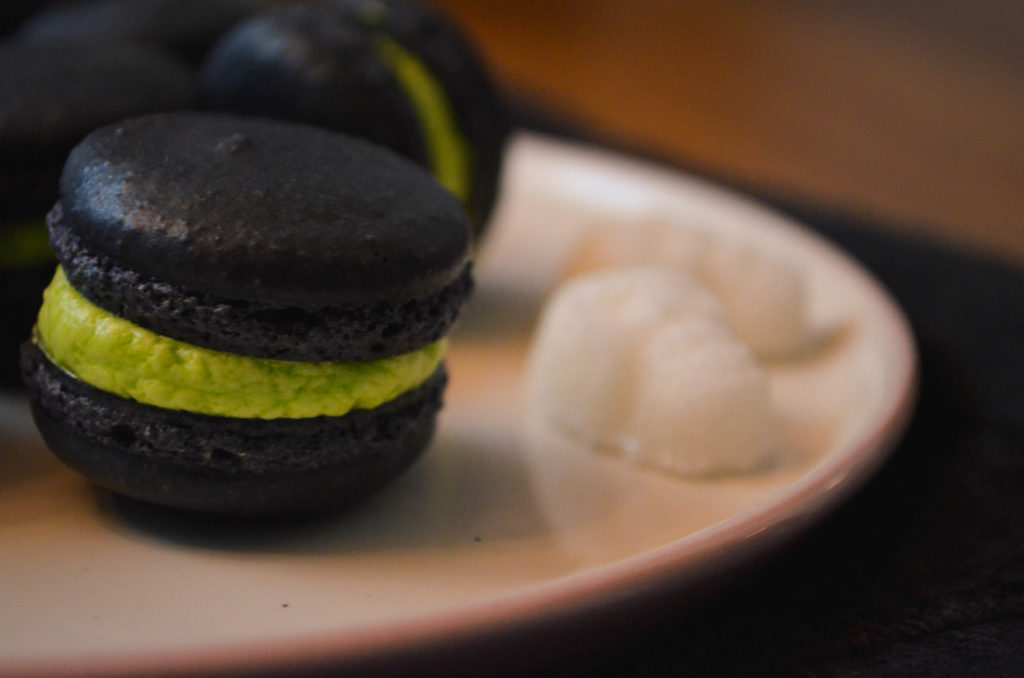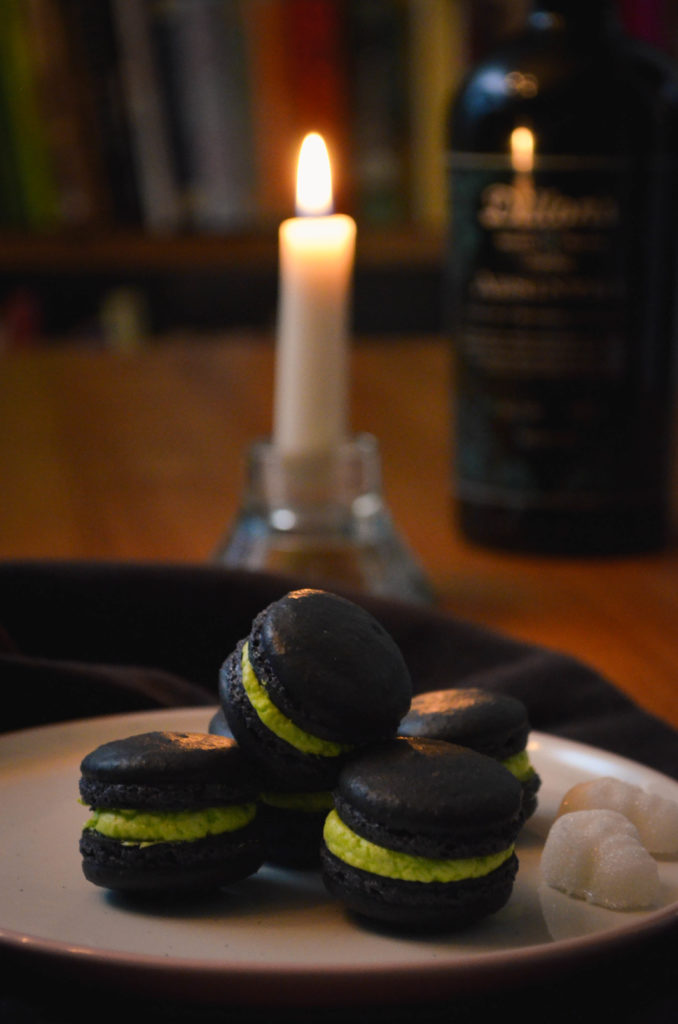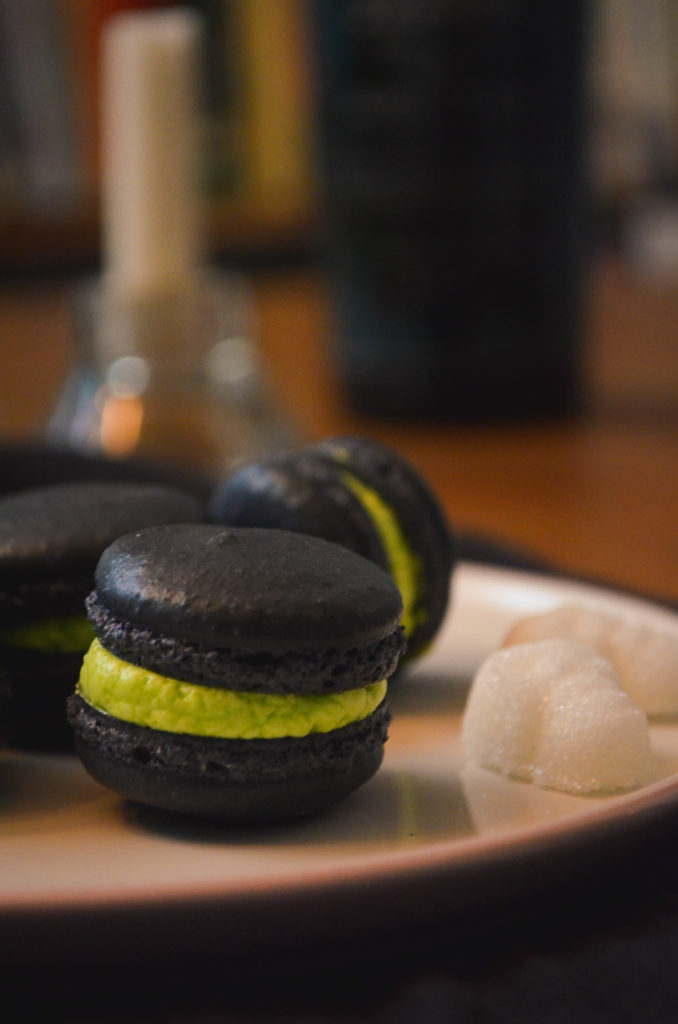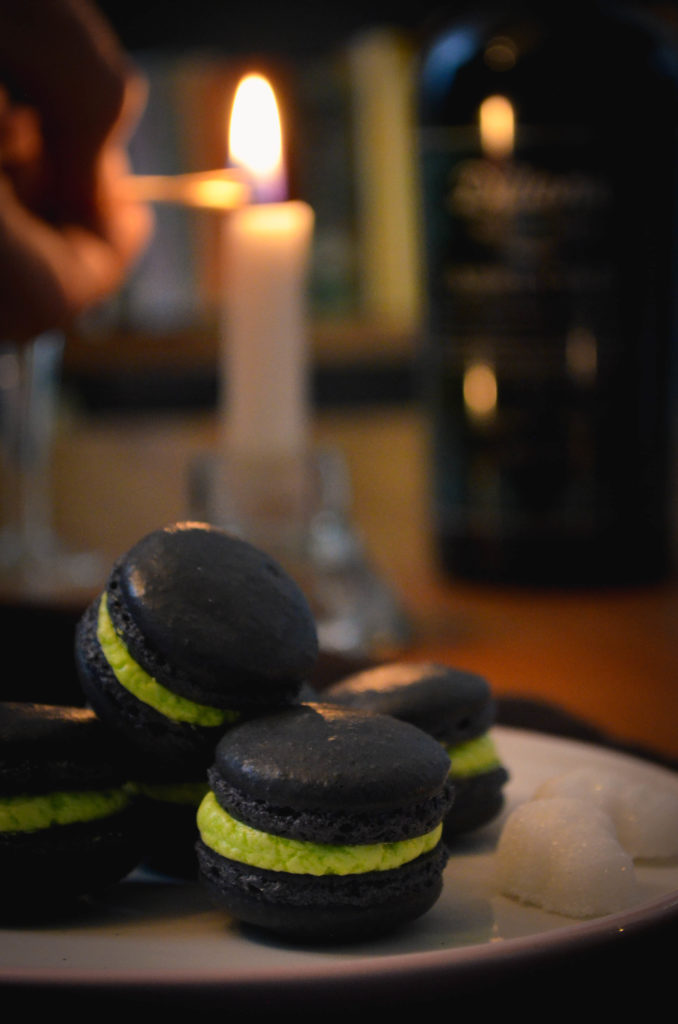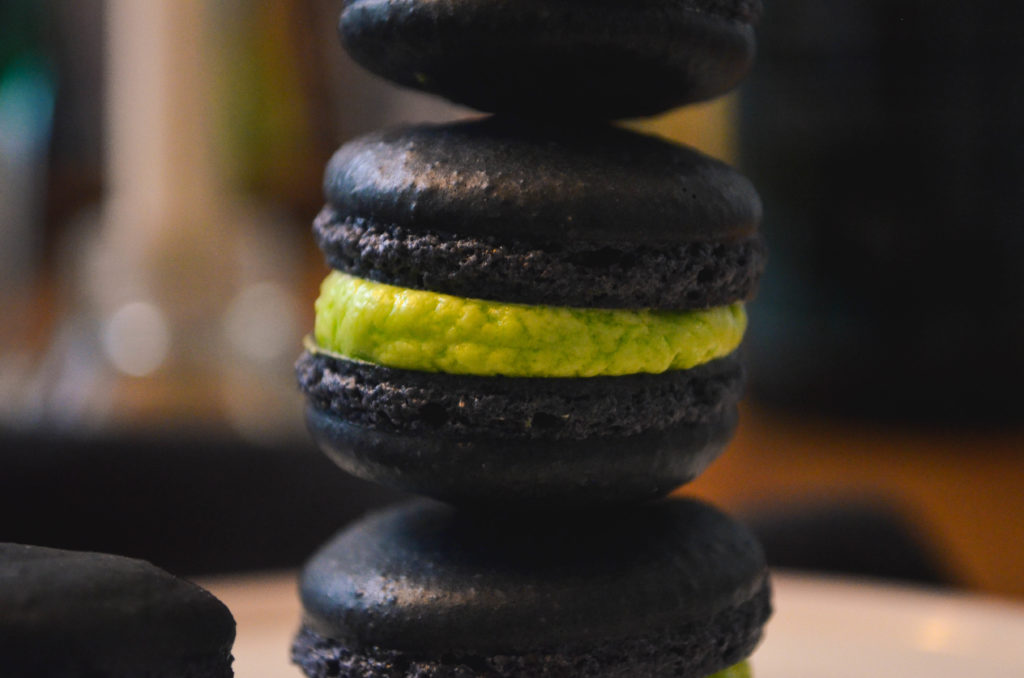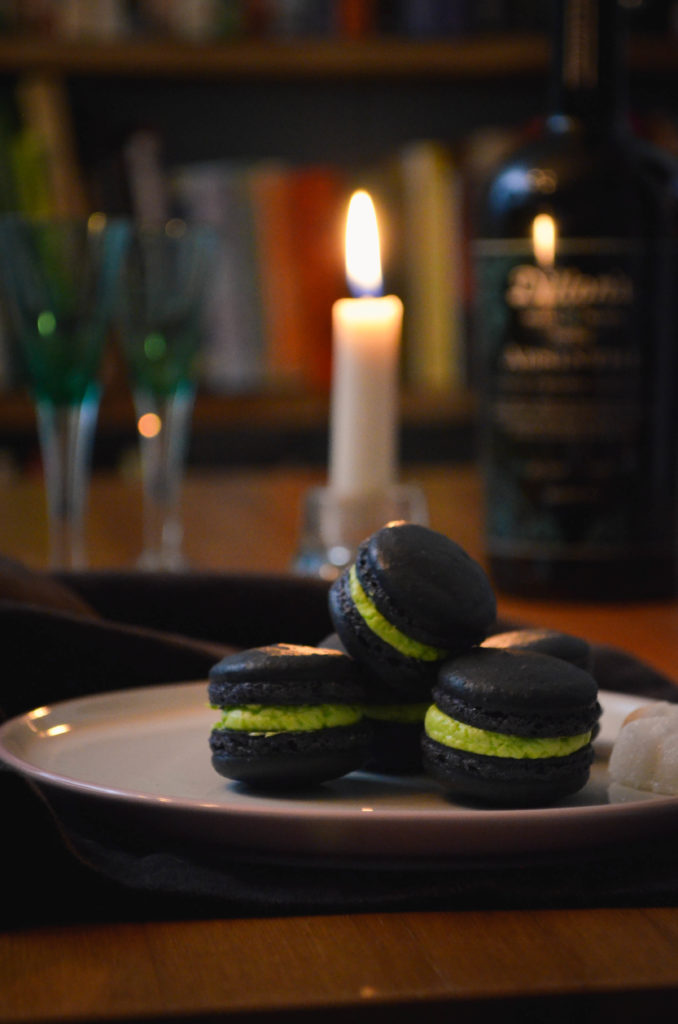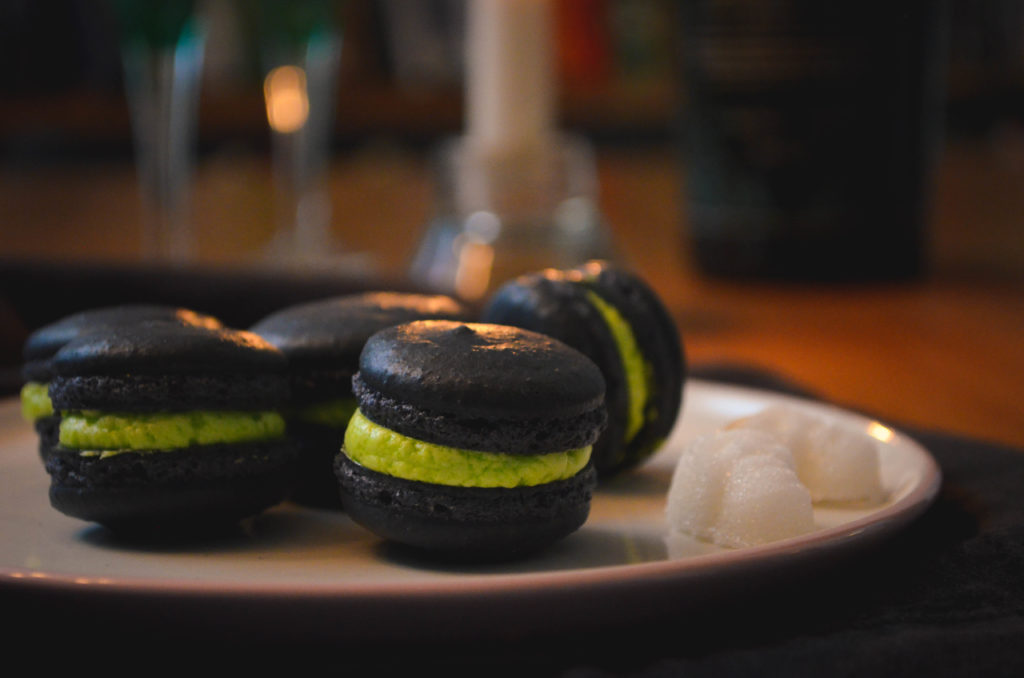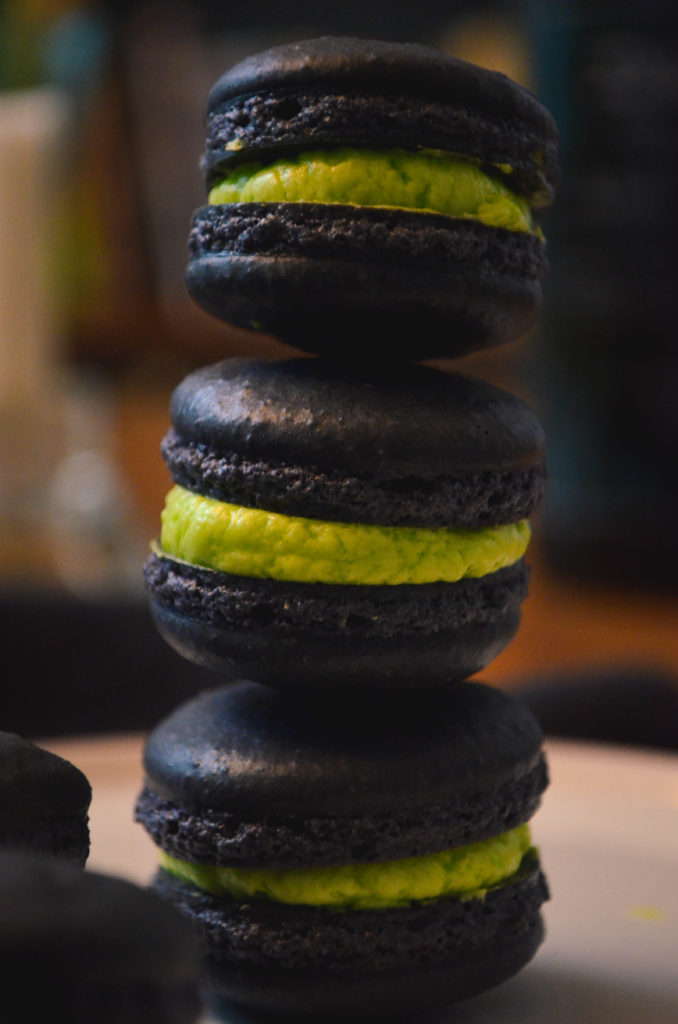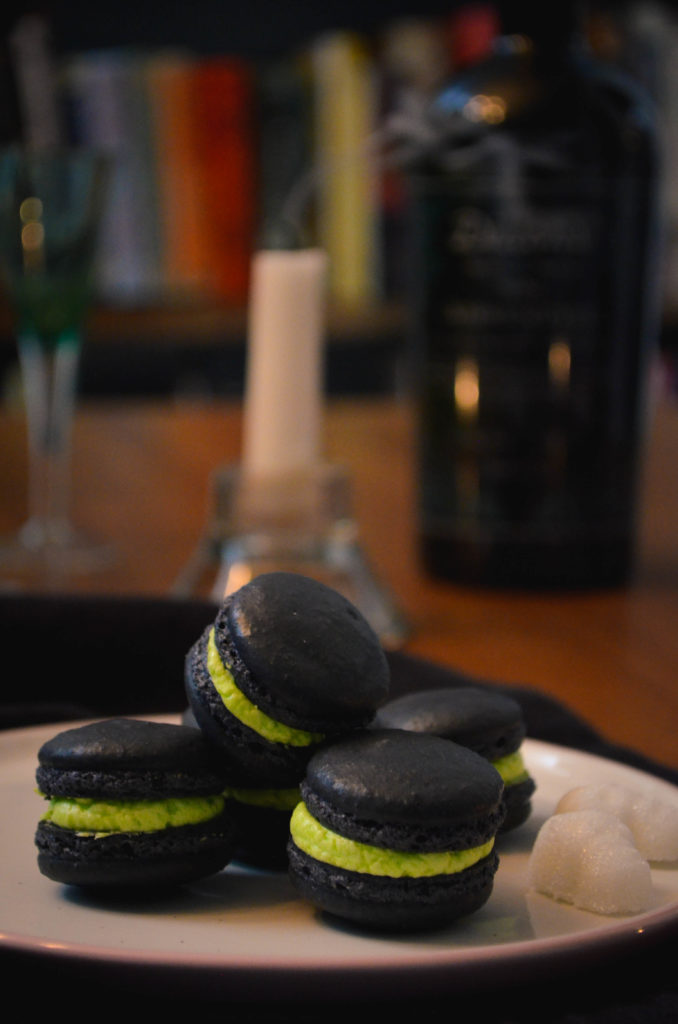I’ve written a few Halloween themed macaron recipes over the years. I’ve taken inspiration from Reese Cups, pumpkin spice lattes and the spookiest cocktail ingredient: absinthe. Here are my recipes.
Peanut Butter & Chocolate Macarons
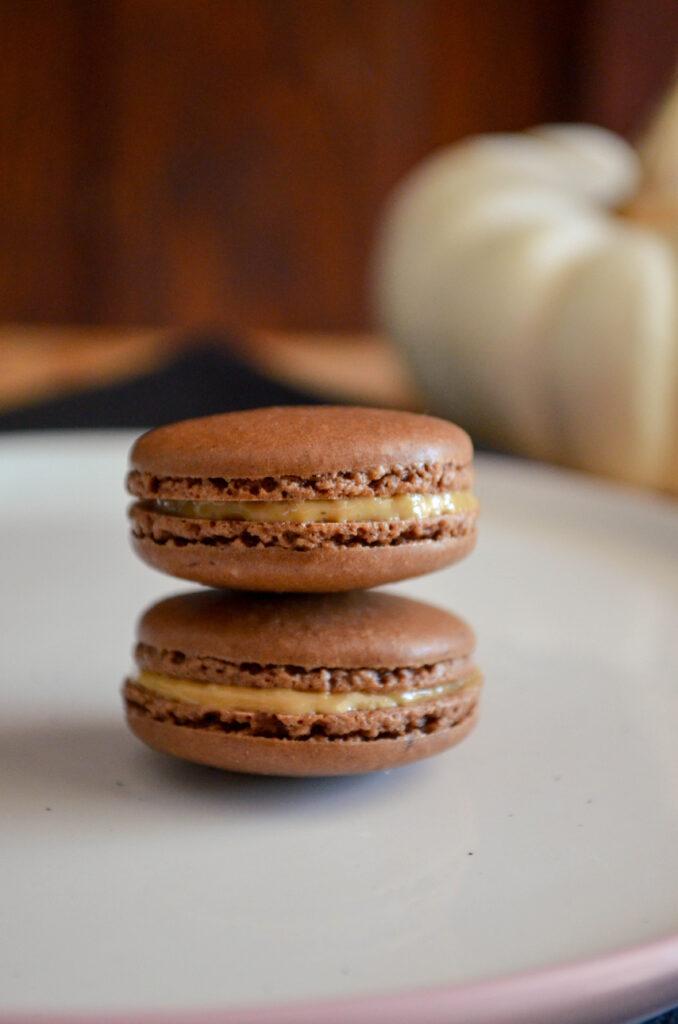
Inspired by the classic, top-tier Halloween candy, these macarons have a chocolate shell and a creamy nut butter filling. My version is peanut free, using cashew butter. Click here to read the recipe.
Pumpkin Spice Macarons
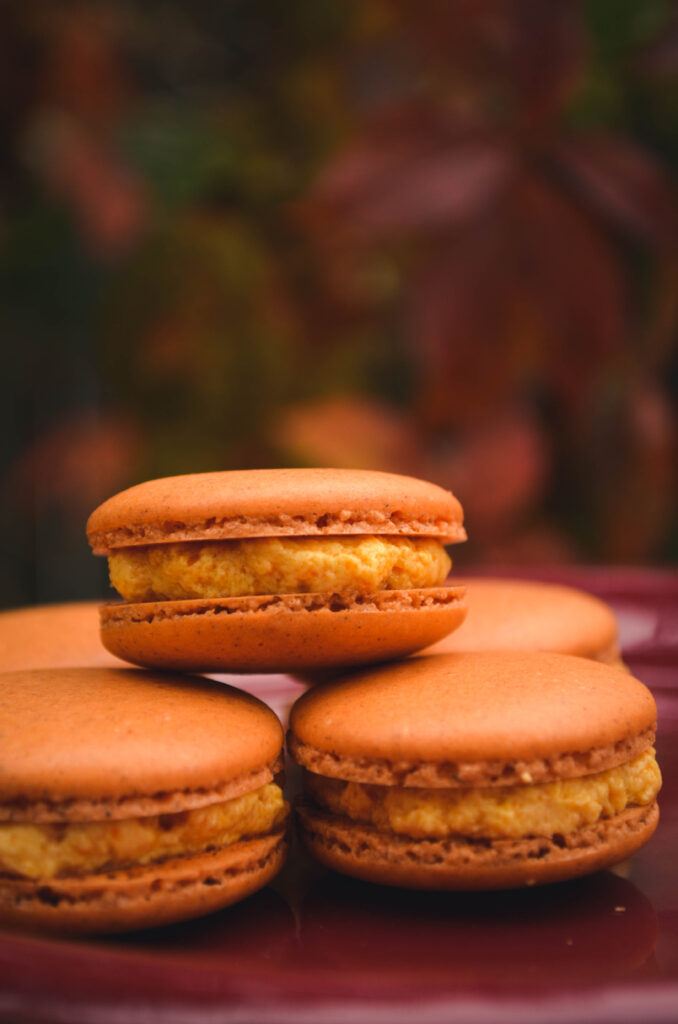
Featuring pumpkin buttercream filling and a fall spiced cookie shell, this macaron is the epitome of October. Click here to read the recipe.
Absinthe Macarons
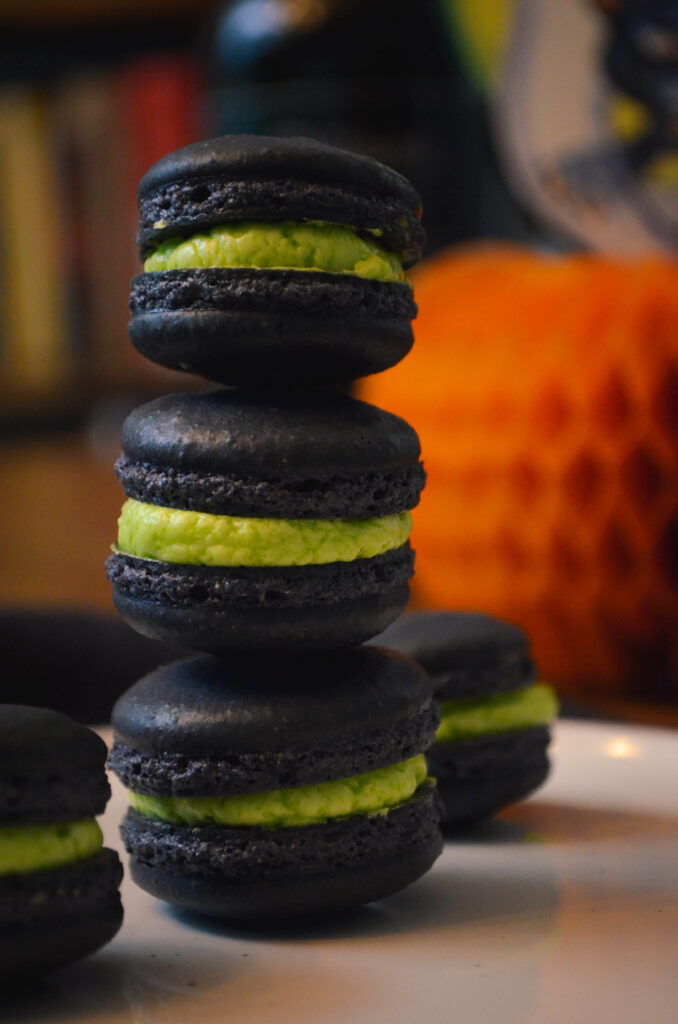
A spooky cookie for a sophisticated palate, this anise flavoured macaron is achieved with a vanilla shell, absinthe buttercream filling, and a heap of gel food colouring. Click here to read the recipe.
Happy Halloween!

